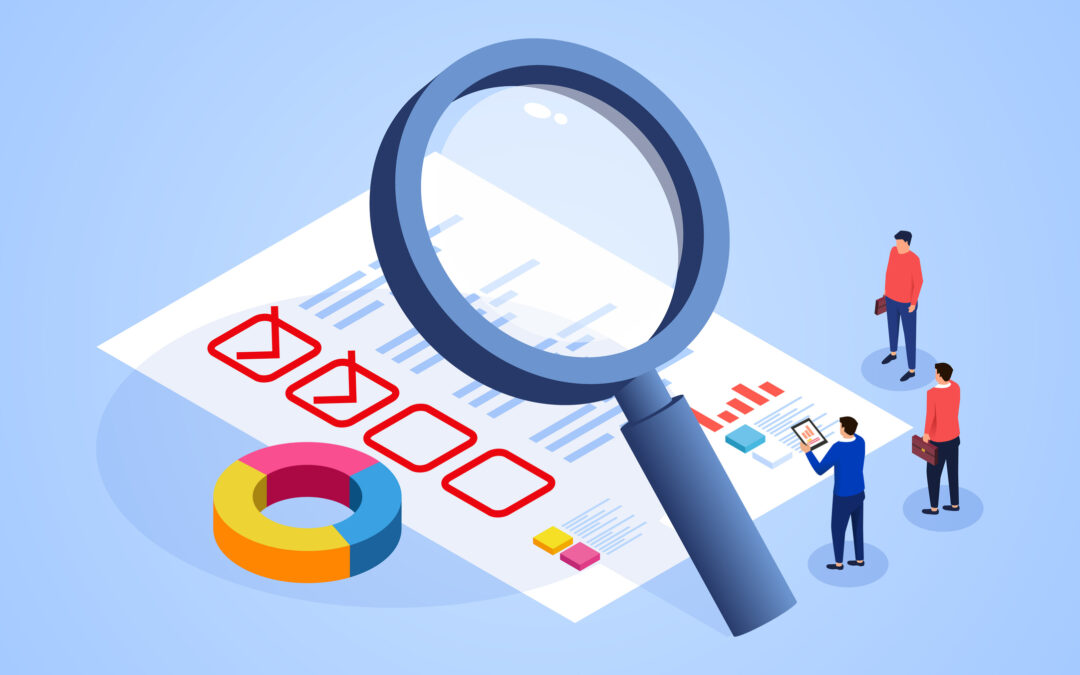It’s daunting to start with a blank page to write a questionnaire that will break through and generate headlines.
At Researchscape, our questionnaire-design meetings follow a structured agenda that ensures surveys meet their goals. You may find this same agenda useful for your own design sessions:
- Screener – the questions that make sure the right people qualify for the survey
- Major Topics – 3 to 5 key sections of the questionnaire
- Desired Headlines – brainstorming dream headlines
- Hypotheses to Test – anything want to prove/disprove
- Categorical Questions – how you want to compare and contrast respondents
Screener
The screening or qualifying questions are to verify that respondents’ profiles are not out of date and that respondents still match how they were profiled, while not tipping our hand about who we are looking for. For instance, perhaps only enterprise IT professionals are being invited to take the survey. Maybe one respondent now works at a smaller company and no longer qualifies. Maybe another has retired. Maybe a third has changed departments. The screener helps make sure only the right people are included.
As a result, you write your questions with all the most frequent answers. For the IT example, we’ll list all the departments (e.g., Administration, Customer Service, Finance) even though only one department qualifies.
Another way to think of the screener is to anticipate how you want to describe the results. Do you want to say “50% of enterprise IT professionals” or “50% of enterprise IT professionals in the construction and manufacturing industries” or “50% of network administrators,” etc. Sometimes narrow and specific helps you to pitch the results; sometimes it hurts you. You need to make sure the screener screens out those you don’t want.
Major Topics
We recommend thinking of three to five core sections of your questionnaire. We’ll use these to arrange and structure the survey, so that questions flow together well for the respondent. We personally typically don’t include the section headings in what our respondents see; instead we use them to structure the report appropriately.
Common topics include:
- Pain points and challenges
- Attitudes and usage
- Future intentions and considerations
- Brand awareness and perceptions (usually not for external reporting).
Desired Headlines
Writing a questionnaire for a newsmaker survey is different than designing a customer satisfaction or general market research survey: such surveys are often academic, clinical, even boring—in contrast, with a newsmaker survey you are looking for punch and attitude. For instance, in its survey about the challenges of home selling, Opendoor found that 27% of home owners would rather get a colonoscopy than sell a home, preferring a literal pain in the ass to a figurative pain in the ass!
With your goals in mind, your team should brainstorm the possible headlines that you would love to see, if the results warrant. Let your team’s imagination go wild, envisioning the results that would best drive coverage.
Our partner Michele Lin of Mantis Research often prompts brainstorming by asking these questions:
- What are your dream headlines?
- What stats do you want to be known for?
- What questions does your audience have that you can answer with data?
- How would you like your research to help your audience think or act differently?
- What is your audience not doing but should be?
Hypotheses to Test
Not every question in a newsmaker survey is meant to be reported. Sometimes you want to take advantage of access to this particular set of respondents and do some market research:
- Proving/disproving assumptions about market segments
- Testing correlations between behaviors and demographics
- Validating perceived trends or shifts
- Conducting a price test
- Testing alternate messages.
Categorical Questions
How do you want to compare and contrast respondents? Some multi-country studies are specifically so that you can compare and contrast each country; others are just to be able to describe the study as representative of a region (e.g., many European and Latin American surveys). Similarly, most multi-industry studies are intended to be representative of the wider market, but sometimes you want to profile key industries, perhaps to pitch results to trade press focused on those sectors.
If you’re comparing and contrasting, say generational differences, then ideally you’d have at least 100 responses for each generation. If you’re pitching specific results, such as for a country or industry, you’ll often want 250 or more responses.
For B2B surveys, we’ll often contrast by industry, department, size of firm, and seniority level. For consumer surveys, generational differences always resonate, but we’ll crosstabulate nine common demographics, focusing on generation, gender, and household income.
